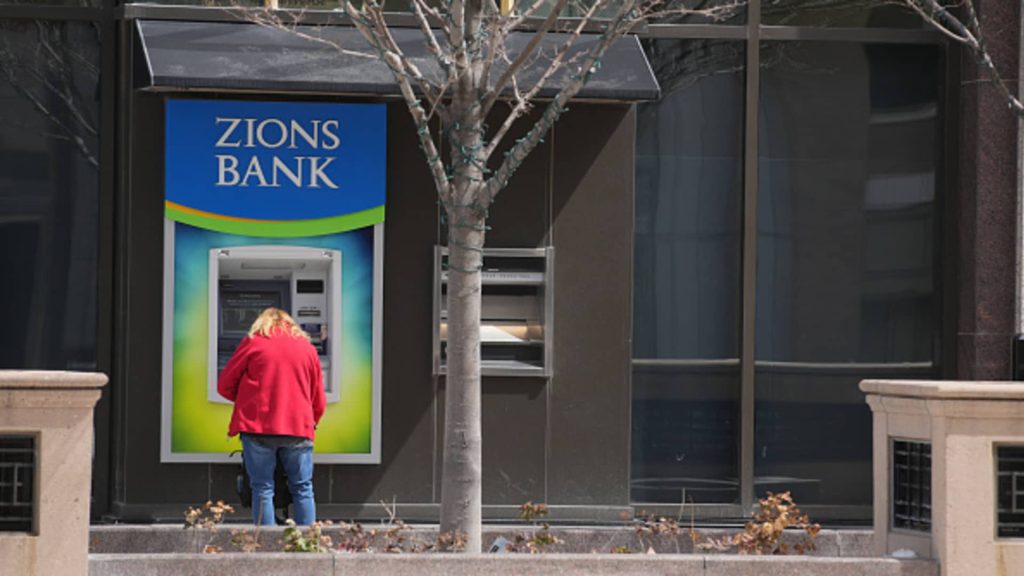Despite worries over bad loans at midsize U.S. banks, there’s little evidence of a systemic problem, according to a senior analyst at Moody’s Ratings.
Marc Pinto, the agency’s head of global private credit, acknowledged in a interview on CNBC’s “Squawk Box” that there are concerns over loose lending standards and some slack in the conditions that institutions attach to loans.
However, he said when looking at the system as a whole, contagion the likes that could trigger a broader financial crisis is not evident.
“When we dig deeper here and look to see if there’s a turn in the credit cycle, which is effectively what the market seems to be focusing on, we can find no evidence,” Pinto said. “Now that’s what we’re seeing today. That could always change. But if we look at the asset quality numbers that we’ve seen over the last several quarters, we’re seeing very little deterioration at all.”
Bank stocks sold off aggressively across the board Thursday after Zions and Bancorp and Western Alliance Bancorp disclosed holding bad loans related to the bankruptcies of two auto lenders. The worries have dragged down shares of investment bank Jefferies this month since it disclosed some exposure to bankrupt auto parts maker First Brands.
Losses swept across the sector Thursday as worries grew that the danger could be more widespread. JPMorgan Chase CEO Jamie Dimon raised some eyebrows earlier this week when he said on the bank’s earnings conference call that “when you see one cockroach, there are probably more.”
“One cockroach does not a trend make,” Pinto said.
In fact, Pinto said default rates on high-yield debt this year have been relatively low, holding under 5%, and are expected to drift down to below 3% in 2026. By comparison, during the 2008 financial crisis, defaults in high-yield debt were in low double digits.
At the same time, the U.S. economy has proven stronger than thought, Pinto added, despite persistent worries about labor market weakness and the impact that President Donald Trump’s tariffs might have on inflation and consumer demand.
Pinto said he is at a conference this week with about 2,000 bankers “and one of the words that I keep hearing is resilience.”
“With respect to GDP growth, we’re doing much better than many people thought just six months ago,” he said. “So again, the credit conditions, looking at GDP growth as well as an expected decline in interest rates, we feel the credit quality is in a pretty good place today and potentially may improve.”
Market sentiment appeared to improve Friday after a sell-off Thursday.
The SPDR S&P Regional Banking exchange-traded fund, which tracks the mid-market leaders, tumbled 6.2% Thursday but rose 2% in premarket trading Friday.

